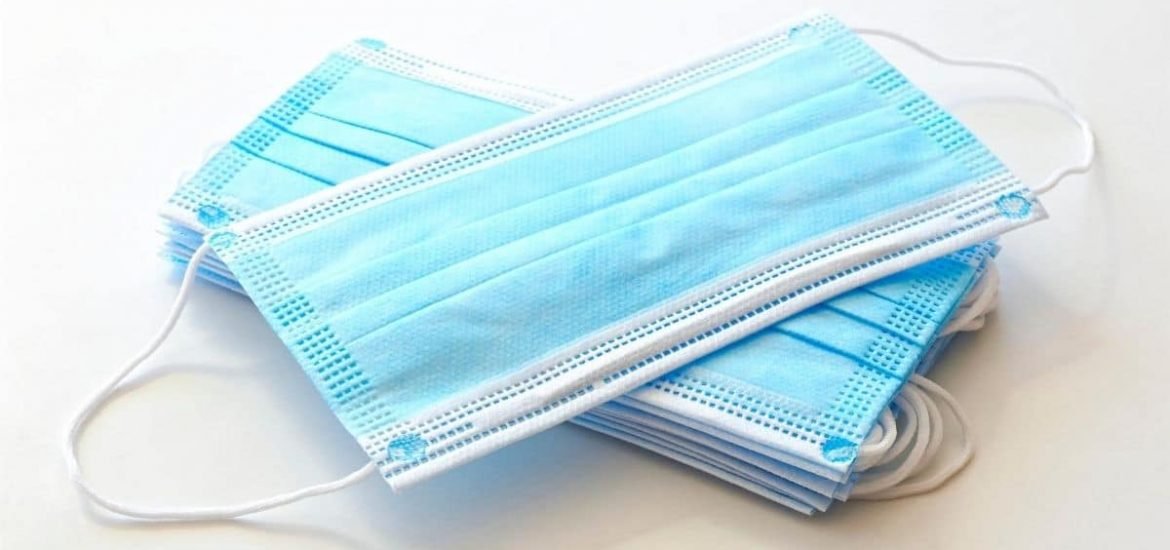
Since the novel coronavirus (SARS-Cov-2) was declared a pandemic last March, there have been mixed opinions about whether or not face masks can effectively slow the spread of the virus. Shifting guidelines from the World Health Organization (WHO) have stirred up some confusion. Initially, the WHO advised against the use of face coverings, then this advice was later reversed.
Wearing a mask is now recommended by the WHO and other national health advisory boards around the globe. Many countries have introduced mandates for mask-wearing in public places, such as supermarkets, pharmacies, etc, in an effort to combat the spread of the coronavirus that causes COVID-19.
The importance of face masks is becoming apparent in light of evidence showing that both pre-symptomatic and asymptomatic transmission is possible. Most health experts claim face masks can help prevent the spread of COVID-19. But how true are these claims? Both epidemiological research and lab-based studies are beginning to provide some clarity.
By far, the strongest evidence for mask-wearing can be found in real-world data or so-called epidemiologic data. Leffler and colleagues analysed data on demographics, testing, lockdowns, and the public wearing of masks from 196 countries and found that countries with cultural norms or government policies supporting public mask-wearing had much lower per-capita mortality rates (1).
Another study from Germany reported that face masks reduced the number of newly registered SARS‐CoV‐2 infections by between 15 and 75 per cent over a 20-day period after their mandatory introduction (2). Overall, the authors estimate that face masks reduce the daily growth rate of reported infections by around 47 per cent.
A lab-based study published earlier this month in Science Advances suggested that cloth face coverings and neck garters offer little protection. But the authors immediately received backlash and more recent studies have contradicted those findings (3).
In a recent study published on 25 August in the Physics of Fluids, Simha and Rao visualized the flow fields of coughs under various common mouth coverings using a technique called schlieren imaging (4). They showed that an uncovered cough can travel up to 3 meters. In contrast, a simple disposable mask reduced the distance to 0.5 meters and an N95 mask limited the spread to just 0.1 and 0.25 meters.
Even a single layer bandana – although least effective out of the tested coverings because it doesn’t tightly fit the bottom half of the face – did slightly reduced the range of respiratory droplets from a cough, making it better than being uncovered.
Another paper published on 27 August in JAMA Internal Medicine reported that reused, sterilized N95 masks, and out-of-date N95 masks retain their effectiveness at protecting health care workers from COVID-19 infection – which is good news for frontline workers who have grappling with insufficient PPE, including face mask shortages, since the start of the outbreak (5).
The authors reported that certain N95 marks are more than 95 per cent effective, followed by surgical masks with ties (75 per cent), and surgical masks with ear loops (40 per cent effective). And this effectiveness is retained even years after the supposed expiration dates.
However, experts have cautioned against N95 masks with a one-way valve (commonly used on construction sites to prevent dust inhalation). While the person wearing the mask will be protected to some degree, unfiltered air and droplets can easily escape from the valve as the person breathes out, which means the mask wearer could still spead the virus to others.
The general consensus seems to be that masks – even, simple cloth ones – while clearly not foolproof can significantly slow the spread of the virus and reduce deaths, especially when used in conjunction other preventative measures like social distancing and handwashing. Masks present a simple low-cost way to save lives while protecting livelihoods.
(1) Leffler, C.T. et al. Association of country-wide coronavirus mortality with demographics, testing, lockdowns, and public wearing of masks. Update August 4, 2020. medRxiv (2020). DOI: 10.1101/2020.05.22.20109231
(2) Mitze, T. et al. Face Masks Considerably Reduce Covid-19 Cases in Germany: A Synthetic Control Method Approach. IZA Discussion Paper No. 13319 (2020). Available at SSRN: https://papers.ssrn.com/sol3/papers.cfm?abstract_id=3620634
(3) Fischer, E.P. et al. Low-cost measurement of facemask efficacy for filtering expelled droplets during speech. Science Advancese (2020). DOI: 10.1126/sciadv.abd3083
(4) Simha, P.P. and Rao, P.S.M. Universal trends in human cough airflows at large distances featured. Physics of Fluids (2020). DOI: 10.1063/5.0021666
(5) Sickbert-Bennett, E.E. et al. Filtration Efficiency of Hospital Face Mask Alternatives Available for Use During the COVID-19 Pandemic. JAMA Internal Medicine (2020). DOI: 10.1001/jamainternmed.2020.4221
Your paper is just perfect according to information i have been spreading.
I send you here above a MedXriv pre print showing this evidence and more about professional risk.
thelancet.com/journals/lanres/article/PIIS2213-2600(20)30323-4/fulltext
best regards
Michel BENDAHAN
Thanks Michel. I will check it out.
as long there is no randomized trial to answer this research hypothesis we have
to rely on observational studies and basic experimental studies. This is an elegant article written by Dr Dunphy.
www,epibiostat.com
Thanks Siobhán Dunphy, yet another fantastic value based article based on research, and I think all the tips are the result of learning through experience, that’s why they are so much valuable for the readers.
Thank’s, It’s a great thing that this article suggested the importance of How effective are face masks at slowing the spread of the coronavirus?